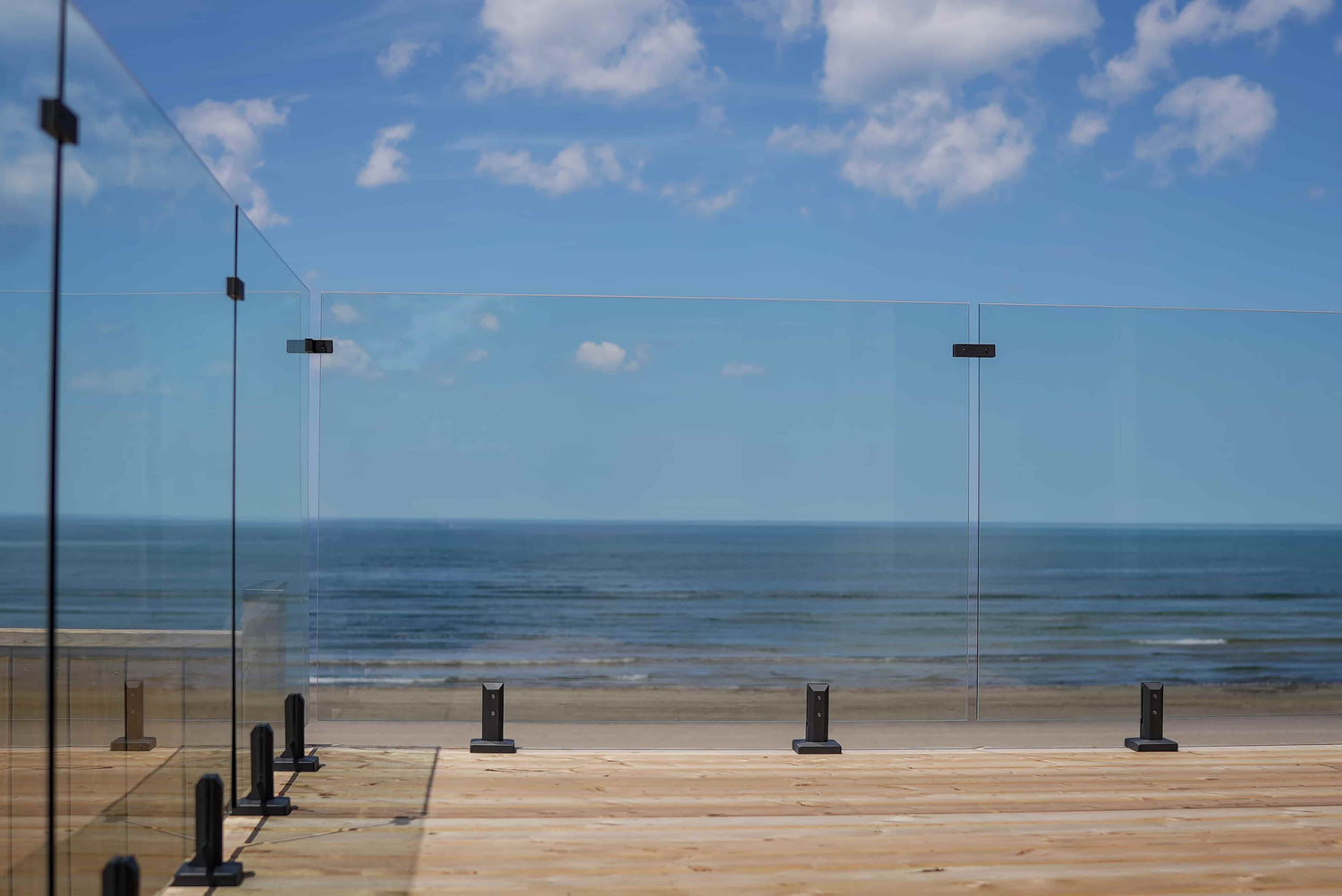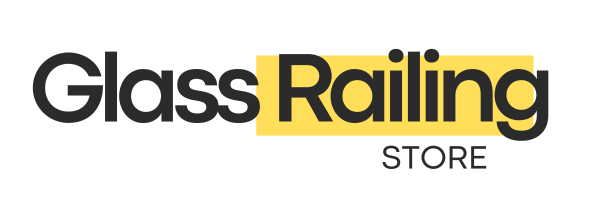Oklahoma Glass Railing Code: Compliance Guide

In Oklahoma, glass railing systems are changing the structures' visual language. They give residences, public structures, and business ventures an air of refinement and openness. Glass is being used by architects and homeowners in places like Tulsa, Norman, and Oklahoma City because of its modern appearance as well as its capacity to provide natural light and maintain sightlines. However, this beauty belies a strong dedication to regulation and safety. State-adopted building codes, which set performance standards for materials, structural strength, and installation techniques, must be strictly followed when integrating a glass railing system. Anyone planning or constructing glass railing systems in Oklahoma must be aware of these specifications.
Oklahoma's Regulatory Foundation
The Oklahoma Uniform Building Code Commission (OUBCC) is the state's construction code regulatory body. The model building code versions that are formally accepted and applied throughout Oklahoma are decided by this commission. The state currently has the 2018 International Residential Code (IRC) for private residences and the 2018 International Building Code (IBC) for public and commercial buildings. To better fit local characteristics including climate and building methods, these versions are enhanced with amendments unique to Oklahoma. Developed by the International Code Council (ICC), these codes serve as nationally recognized benchmarks that address structural integrity, occupant safety, and design standards. The OUBCC makes these accessible via the official state website, where stakeholders can find updates, public notices, and code amendment summaries.
Code Requirements for Residential Glass Railings
Residential glass railing standards in Oklahoma follow the 2018 IRC (adopted Sept 14, 2022), applying to single-family homes, duplexes, and townhouses. The goal is to protect occupants from falls and glass-related injuries on elevated walking surfaces.
- Guardrail Height: Must be at least 36 inches above walking surfaces.
- When Required: All decks, porches, and floors more than 30 inches above grade need a guardrail.
- Opening Limits: Any gap in the railing system (including between glass panels) must not admit a 4″ sphere.
- Glass Specification: Glass must be safety glazing. That is, laminated and tempered or heat-strengthened, meeting ANSI Z97.1 Class A or CPSC 16 CFR 1201 Category II requirements, with a minimum thickness of ¼″.
- Top Rail: Mandatory when glass is used as structural balusters. Unless the laminated glass passes ASTM E2353 post-breakage testing or is an in-fill supported by fixed framing.
- Load Requirements: Guard systems must resist 50 lb/ft linear and 200 lb concentrated loads; laminated glass must include a safety factor of 4 in its design.
Tip for homeowners: Choose manufacturer-supplied glass railing kits that come certified to meet these requirements and include proper safety labeling and documentation.
Commercial Glass Railing Applications Under the 2018 IBC
Oklahoma’s commercial and mixed-use buildings are subject to the more stringent rules of the 2018 IBC. These codes are applicable to spaces like offices, hotels, multi-family housing complexes, and educational institutions. Safety is the top priority, especially in high-traffic environments.
Key IBC standards include:
- Guardrail Height: Minimum 42 inches in commercial settings.
- Load Bearing Requirements: Must withstand a 200-pound concentrated load at the top edge and a uniform load of 50 pounds per linear foot.
- Glazing Rules: Glass must be either tempered or laminated safety glass. Laminated glass must demonstrate residual strength after impact or breakage.
- Top Rail Conditions: Tempered glass systems require a top rail, while laminated glass systems may omit this component if tested and verified by a professional engineer.
- Glass Labeling: Every glass panel must be permanently marked with the safety glazing standard and manufacturer identification to pass code inspection.
Professionals installing railing systems in offices or multi-unit residences can save time and avoid errors by selecting engineered railing kits that meet or exceed IBC criteria.

Common Pitfalls and How to Avoid Them
Even seasoned builders sometimes run afoul of code requirements. Missteps in product selection or documentation can lead to failed inspections and costly rework. The most common code violations include:
- Using non-compliant glass types such as annealed glass.
- Failing to include a top rail when required.
- Not securing engineering documentation for laminated glass systems.
- Improper fastener installation that undermines structural integrity.
- Using glass without manufacturer labels or verification stamps.
To stay in compliance, many builders now opt for tested, third-party certified systems with pre-installed safety documentation. These kits minimize risk and simplify approval from inspectors.
Residential vs. Commercial Glass Railing Code Comparison
|
Feature |
Residential (2018 IRC) |
Commercial (2018 IBC) |
|
Minimum Guard Height |
36 inches |
42 inches |
|
Maximum Opening |
4 inches (sphere cannot pass through any opening) |
4 inches (same standard) |
|
Glass Type |
Laminated + Tempered (must meet ANSI Z97.1 or CPSC 16 CFR 1201) |
Laminated Safety Glass, often with tempering (must meet ANSI/CPSC) |
|
Top Rail Requirement |
Required if glass is structural. May be omitted if laminated glass meets post-breakage load retention (ASTM E2353) |
Required unless laminated glass passes post-breakage tests |
|
Load Resistance |
200-pound point load on any location; 50 lbs./ft uniform for handrails |
200-pound point load and 50 lbs./ft uniform applied horizontally |
|
Labeling |
Required (glass must be permanently labeled by the manufacturer) |
Required (label must indicate compliance with ANSI/CPSC standards) |
|
Engineering Reports |
Recommended for custom or site-built systems |
Mandatory for all nonstandard, site-built, or structural glass guards |
A Practical Outlook on Compliance
Compliance is about safeguarding assets, reputations, and lives—it's not just about checking boxes. Contractors and homeowners can stay out of trouble with the law and feel more at ease by adhering to Oklahoma's adopted versions of the IRC and IBC. Tenants and property purchasers are also reassured by the implementation of these rules that safety was given top priority during the planning and construction phases. Whether your project involves a private deck in rural Oklahoma or a large-scale urban development, using code-ready glass railing solutions can streamline your workflow and prevent unwanted delays. These systems include engineering details, fastener types, safety glass specs, and installation guides.
Frequently Asked Questions
1. Which building codes apply to glass railings in Oklahoma?
Residential properties must follow the 2018 IRC, while commercial and public spaces fall under the 2018 IBC.
2. Is laminated glass safer than tempered glass for railing systems?
Both types offer excellent safety, but laminated glass holds together after breaking, which may eliminate the need for a top rail in some designs.
3. Can I install a glass railing myself on a residential property?
Yes, with proper planning and by using pre-approved systems. Still, it's best to consult your local building department before starting.
4. What documentation do I need for a code inspection?
You will typically need proof of glass type, load resistance testing, installation details, and sometimes engineering reports if you're using custom configurations.
5. Where can I buy compliant glass railing systems in Oklahoma?
The Glass Railing Store offers systems that meet both the IRC and IBC standards and include all required documentation.
Let customers speak for us

Glass Railing Near You
Discover how The Glass Railing Store has been delivering exceptional service to our customers, thanks to our dedicated and knowledgeable team and their love our glass railing products.







